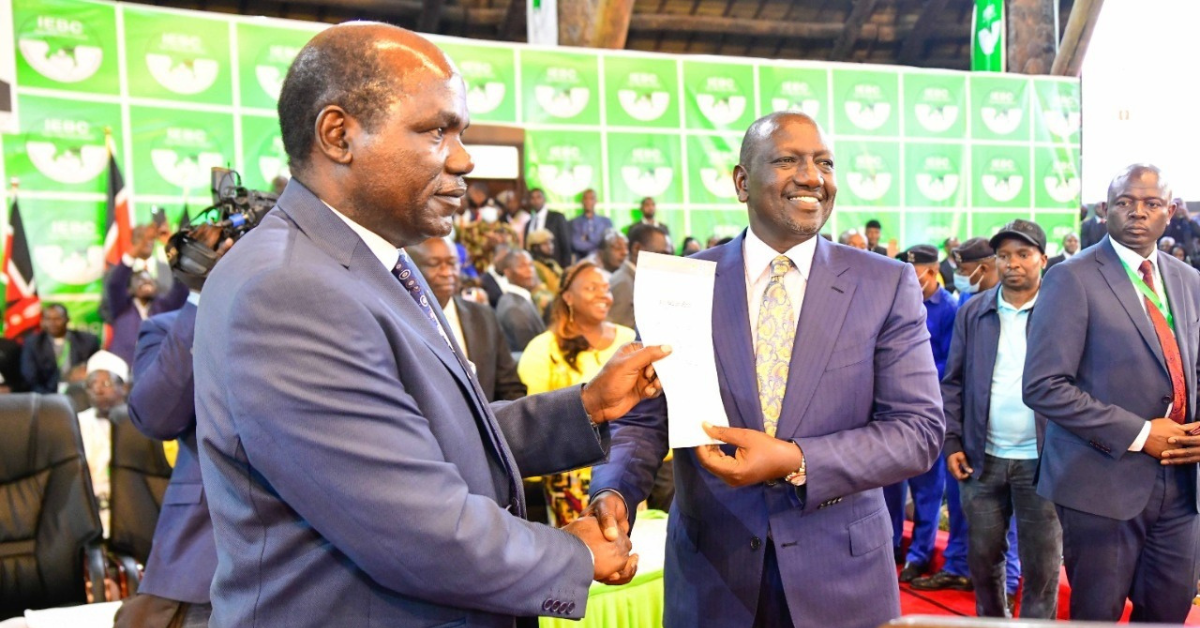For 50 years, Kenya’s branding challenge has remained remarkably the same: how to diminish – to insignificance – the ugly in the beautiful. Or, to use a more graphic, if somewhat revolting metaphor, how to avoid the ‘fly in the soup’ curse. (By ‘fly in the soup’ I mean it plainly, not as the usual joke!).
The ‘flies in the soup’ in Mzee Jomo Kenyatta’s years were the assasinations of Tom Mboya, Josiah Mwangi Kariuki and others, detentions and tourture, and the seeds of corruption and ethnic division. The ‘soup’ was a reasonably principled and professional Cabinet and civil service that laid the foundation for a capitalist economy.
In the Moi years, the ‘flies in the soup’ were basically the same as Mzee Kenyatta’s – the assasinations of Robert Ouko, detentions and torture; galloping corruption and economic mismanagement; and a false peace that hid simmering ethnic tensions. The ‘soup’ was a relatively disciplined politics, a foundation for expanded education, and a brief but welcome focus on environemtal conservation.
The Kibaki years suffered the same curse. It started with the declicious ‘soup’of heady optimism (as now) and endured the rotten ‘flies’ of corruption, tribalism, insecurity and a growing trade in narcotics, and a near collapse of the State – the result of mismanaged political competition. The redeeming ‘soup’ was an expanded access to education, a welcome emphasis on infrastructure, better economic leadership and the promulgation of a new constitution.
For those fifty years, the cooking pot – to stretch this metaphor to breaking point – has always been the same: the land and its people, always geneorus, beautiful and resilient.
Whenever I have introduced myself as a Kenyan during my travels around the world, the follow-up comment from those who have visited or heard about the country has invariably been “Oh, you have a beautiful country but you should do something about your corruption.” The tag of “a poorly and corruptly-led beautiful country of dynamic and friendly people” has stuck.
As I listened to President Uhuru Kenyatta’s speech at the opening of the 11th Parliamanent, I wondered if this was in his mind when he said: “Corruption makes our country less attractive as an investment destination. It limits access to much needed services, stifles efficiency and eats away at public values.”
Even as the new presidency tackles their personal branding challenge – removing the ‘fly’ of the ICC – there will be an urgent need to address the larger national rebranding challenge.
If a scientific global ‘perceptions survey’ were to be carried out today about the country, the most powerful images that come to mind are probably these: Kenya as the land of ‘Kitu Kidogo’, Kenya as the country of great long-distance runners (last year Kenyans won 31 of the 43 IAAF marathons – an impressive 72%); and Kenya as the country of M-PESA and Ushahidi technological innovations.
And yet, notwithstanding the commendable work done by the Brand Kenya Board, Kenya as a country brand ranks quite poorly. FutureBrand, a branding subsidiary of the McCann-Erickson Group, had Kenya at position 74 out of 144 countries in its 2012 ranking. Switzerland was ranked first, its limited natural rersources notwithstanding, no doubt because of strong public associations with the attributes of stability, efficiency and quality. It is instructive that Switzerland has successfully ‘diminished to insignifance’ the tag of a country where illegally acquired wealth (inluding Nazi loot) is secretely kept. Clearly, it is a matter of which image and message gets repeatedly imprinted in people’s minds.
In a report titled KPMG Africa Fraud Barometer 2012, Kenya, along with Zimbabwe, South Africa (surprise, surprise) and Nigeria were said to make up 74 per cent of all fraud cases reported in Africa. In the East African region, fraud cases reported in Kenya more than twice that of Uganda and Tanzania, at 7.75 per cent compared to 2.98 per cent and 2.78 per cent respectively.
The impression of Kenya as a fraud champion not only in the East Africa region but in Africa persists. This is despite the fact that other surveys actually show some of its East African neighbours in worse light. The East African Bribery Index for 2012 published by Transparency International (Kenya Chapter), for instance, ranked Kenya third ahead of Uganda and Tanzania. No matter. Corruption in Kenya is real and big. In December 2010, even the most cynical and hardened Kenyan must have blinked when Finance Ministry Permanent Secretary Joseph Kinyua told a parliamentary committee that the Kenyan government could be losing nearly one-third of its national budget to corruption (Daily Nation, Thursday, December 2 2010). That is more than KShs 300 billion a year! So, this is not just about impressions.
Re-branding the country will not be easy. But it starts at the top. The president’s words at the opening of the 11th Parliament are encouraging. Now let us see action and results.

